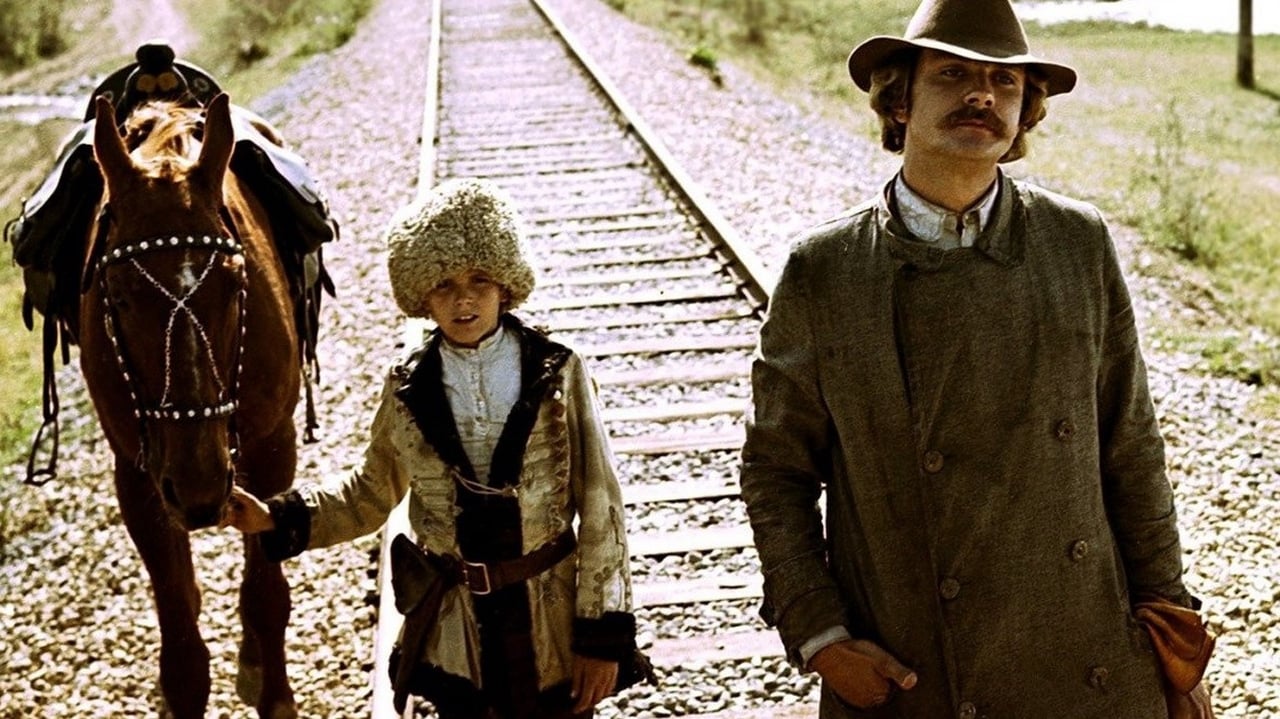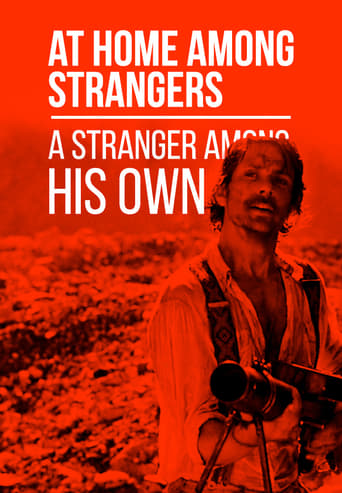Doomtomylo
a film so unique, intoxicating and bizarre that it not only demands another viewing, but is also forgivable as a satirical comedy where the jokes eventually take the back seat.
Lollivan
It's the kind of movie you'll want to see a second time with someone who hasn't seen it yet, to remember what it was like to watch it for the first time.
Lachlan Coulson
This is a gorgeous movie made by a gorgeous spirit.
Leofwine_draca
I watched this under the title FRIEND AMONG STRANGERS. It's a mixed bag of a film, light-hearted in some places and rather heavy in others, with the usual Russian mix of masculine attitudes and heavy emoting. The story, set during a civil war in 1917, is about a group of buddies who decide to rob a train, and the fall out that subsequently ensues.I found it quite a middling film despite the best intentions. The movie itself looks good when it's in colour, but it does swap to cheap black and white for certain crucial scenes. The cast is okay and the actors do fit their parts pretty well, but nobody really stands out as a sympathetic character. A debt of inspiration seems to have been paid to BUTCH CASSIDY AND THE SUNDANCE KID, but this is a far cry from the quality of that movie.
Becky Alfaro
Set in the 1920's shortly after the end of the Russian civil war and released on 1974 during the Brezhnev era, at home Among Strangers, Stranger at Home is an action film that lives up to its genre and also manages to develop a more complex storyline than other action films that just focus their attention towards gruesome fight scenes. The scenes in which fighting did occur were much less graphic but still just as affective on eliciting the same level of excitement that is characteristic of an action film. During these scenes the movie is very reminiscent of American action films which depict western cowboy lifestyle.The story itself deals with the character Shilov who is accused of treason after a precious shipment gets stolen under his watch and he gets framed for it. From the very start, the films images were particularly striking both cinematically and psychologically. The different settings of this intro which included a countryside (common for this point in time) and a small living area, all captured my attention immediately. The intro alone initiated a large list of questions with its seeming randomness. Such as why are they yelling and dancing? Or Why did they just push that carriage down the hill? What is strategically communicated through this intro despite the lack of dialogues is the character's deep bond with each other and their emerging friendship. There are many other scenes later on in the movie that may seem random but serve a purpose to further convey these ideas of forged bonds. One such scene is when the train robbers are all jubilant after having stolen the gold. Through the different uses of genius cinematographically placed supporting scenes this film ended up being more than just a plain action movie. The character development was phenomenal and the action scenes ended up being one of its main attributes.
Joe M
At Home Among Strangers, a Stranger Among his Own is a rollicking action and adventure film that nonetheless calls attention to deeply important themes in Russian history. Set directly after the Russian Civil War, the film looks and feels very much like an American Western, embodying motifs of greed, justice, honor, and betrayal. In the film, a shipment of gold being sent to Moscow for the purchase of food supplies is intercepted by a band of train robbers, who are themselves infiltrated by a Red veteran–accused of trying to steal the gold–out to see justice done and clear his name, and by the murderous villain who framed him. Meanwhile, the local Cheka attempts to solve the crime, leading to numerous chases and gunfights. Along with the action and suspense that drive the film's plot, At Home Among Strangers explores the challenges in Russia following the Red victory over the Whites. After the war, an entirely new struggle of rebuilding a divided country begins. The film showcases victorious but overwhelmed reds, defeated but still greedy Whites, and bandits surviving however they can, bearing no political or ideological affiliation. The chairman of the Cheka embodies the struggle of uniting a country made up of such disparate factions; he struggles to do everything that must be done to transition from wartime to socialist peace. Likewise, a former cavalry officer grapples with settling finances, doing his part for peacetime when the battlefield is all he knows. Finally, demonstrating the fundamental divisions within Russian society, the hero Shilov struggles to retain the trust of his fellows, who know that his brother fought for the White army. Stylistically, this "ostern" pays homage not only to the popular American cinema it emulates, but also to previous triumphs of Russian film. A scene in which machine guns are fired from atop cliffs at the water below recalls the final minutes of the Vasilyev Brothers' Chapaev, and some scenes in the movie, like flashes of comrades-in-arms celebrating their victory amid feelings of betrayal, and an image of a wagon tumbling down a hill as the exhausted Shilov makes his way down a similar decline to his waiting comrades, are unmistakable nods to the montage style made famous by Eisenstein and his contemporaries. When the gold is finally returned and old friends regain their mutual trust, shots of the men celebrating the end of the war are interspersed with those of them celebrating the safe return of their valuables. Ironically, their glee over the gold is matched only by the joy they had taken in their victory over such material possessions, and the superimposition serves to remind audiences that now, even amid all their struggles, wealth and camaraderie go hand in hand, and that hard-earned gains are for the benefit of all.
nephihaha
I'm very fond of this film, albeit with some misgivings about its one sided version of history (see later). It is basically a film about a group of friends who have just been demobbed from the Russian Civil War, and who are trying to get themselves back into civilian life, when one of them is framed for a gold robbery, and has to fight to prove his innocence.Like many Soviet films of the time, it switches from colour to black and white at the drop of a hat, but in this film that works quite well. The music has a cheesy 1970s charm to it, and it reminds me of "Butch Cassidy and the Sundance Kid" in a positive way. In fact, this film reminds me of "Butch Cassidy" in more ways than one. They both have the same feeling of sad nostalgia to them, and friendship.I count myself lucky to have seen it in the cinema, since it is hardly ever shown in this part of the world. The action sequences are excellent, with the exception of the assault on the bandits' camp, which we don't see at all.Of course, the one thing I am uncomfortable with is the revision of history in the film and the political aspects. At times, the film lards you with Communist propaganda, and completely ignores the fact that the famines in the Soviet Union at the time were partly because of the government. The Cheka is presented as an entirely benevolent force (we know from the Soviets' own records that it was often brutal and barbaric, and arrested innocent people.). There is a bit of stereotyping in the film as well - one of the Muslim characters is portrayed as a complete idiot.However, if you're willing NOT to let that get in the way, it is a brilliant film. If you get hold of the DVD, I recommend watching it with English subtitles, rather than with the English dubbing (I have watched both versions), because that version is much better.

